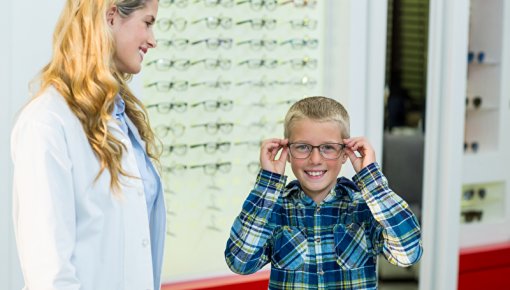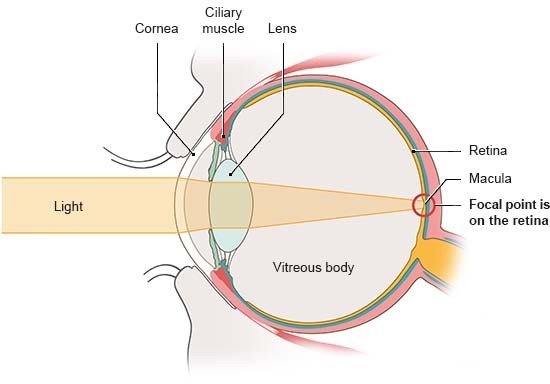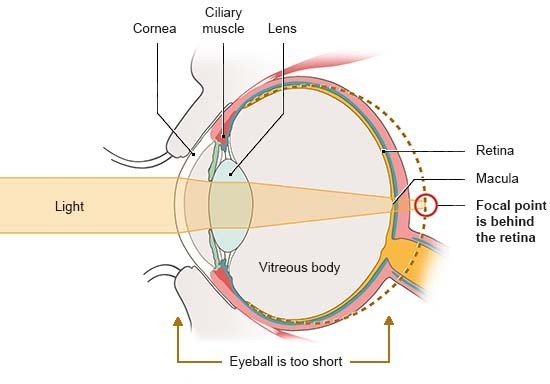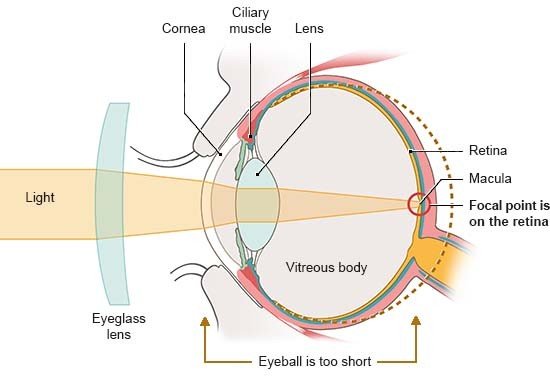Glasses and contact lenses for farsightedness

Being farsighted means that you can’t see things that are close to you clearly or that you may develop symptoms like aching eyes or headaches. Glasses or contact lenses can compensate for the farsightedness, meaning that you can see clearly again without any problems.
Lots of people are familiar with the problem of being able to read street signs, but then having problems with the words in a book becoming blurry when held too close. Problems like that are often caused by farsightedness. In childhood, our eyes can normally compensate for that on their own. But farsightedness can cause things like aching eyes and headaches. It is common to have difficulty things that are closer because of farsightedness as we get older. And it can make the normal age-related farsightedness that starts at about the age of about 40 worse.
In these situations, wearing glasses is a simple solution: They correct the refractive error and you can see objects that are close clearly again without straining your eyes. Contact lenses are an alternative – they offer some advantages over glasses, but also have disadvantages.
Surgery to correct the farsightedness is also an option for some people. Ideally, they will no longer need glasses or contact lenses after the surgery.



